On 16 December 2020, the RIPE NCC implemented phase 1 of Numbered Work Item 10 (NWI-10), which applies a consistent interpretation of the Country Code attribute in the RIPE Database and the Extended Delegated Statistics. In this article, we quantify the changes that were made to the latter.
Introduction
Since 2003, the RIPE NCC, like the other RIRs, has been publishing daily files of all assigned and allocated resources (IPv4, IPv6 and AS Numbers). For each assigned or allocated block these Delegated Statistics list the date of delegation by the RIR, the delegation status, and an associated ISO-3166 Country Code. In May 2012, the statistics were extended with data on resources held but not (yet) delegated by the RIPE NCC. Thus providing a comprehensive and anonymised view of the RIPE Registry suitable for use in analysis by third parties.
Fixing the Country Codes
Historically, the Country Code in the Delegated Statistics never had a clear definition. For small organisations the country of residence is often the same as the country where the IP and AS Numbers are used. For larger organisations the situation is more complicated as networks may span multiple countries. Interpretation of the Country Code values in the statistics was therefore difficult. The same applied for the country attribute in the RIPE Database. The RIPE NCC proposed a solution which was discussed by and reached consensus in the RIPE Database Working Group. For the Delegated Statistics, this means that the Country Code should show the country in which the resource holder is legally based.
In October 2020, we presented our three-phase implementation plan. The first phase was completed on 16 December 2020. For the Delegated Statistics, that resulted in a change of Country Code in 6% of the records. To help those in the community who use the Delegated Statistics to gain insight in the geographical distribution of the Internet Number Resources, we quantify the changes in this article. It is important to note and take into account in any analysis that these changes are all administrative by nature. The location of the resource holders did not change and neither did the location where the resources are used. Most notably, the changes in Country Code with respect to the day before should NOT be interpreted as being the result of transfers between LIRs in different countries.
IPv4 addresses
For IPv4 resources, we see the Country Code change in 5,373 out of 83,600 records. In total, the changed records cover 21 million IPv4 addresses, which corresponds to 2.5% of the RIPE NCC managed IPv4 pool. The 15 country codes with largest net change are listed in table 1. Although “EU” is not an officially assigned Country Code (see ISO-3166 standard), it has been used by organisations to indicate a block of addresses used in various countries throughout the RIPE NCC service region.
| Country Code | IPv4 Addresses | IPv4 blocks |
| EU | -4653312 | -365 |
| BE | -3695616 | -30 |
| IE | 3493376 | 35 |
| US | 3403360 | 1150 |
| NL | 2148928 | -500 |
| DE | -681216 | -532 |
| DK | -436352 | -41 |
| RU | -396288 | -131 |
| CZ | 384512 | 169 |
| SE | 381184 | -6 |
| FR | -345856 | -141 |
| ES | -253184 | -127 |
| NO | -248064 | -31 |
| CA | 247296 | 71 |
| AT | -215552 | 92 |
Table 1. Top 15 net changes for IPv4 addresses aggregated by Country Code
The net increase of 3,4 million addresses for the “US” Country Code shows that a part of the RIPE NCC membership is legally based in the United States. These members fall in two categories. The first consists of large, globally operating, providers, which received addresses from the RIPE NCC to number those networks that are located in the RIPE NCC service region. The second category consists of smaller organisations, which are legally based overseas (e.g. for tax reasons) but are otherwise operating from the RIPE NCC service region.
Figure 1 details all “flows” of size /18 or larger, where the word “flow” needs to be read as the total sum of all addresses changing from one specific country to another. As stated before, these changes are all administrative and do not represent real flows of IP addresses. All registrations stayed the same, as did the country where the address space holder resides and the country/countries where the address space is used.
Most prominent are the 3,5 million addresses which see their Country Code change from Belgium to Ireland. Blocks with the “EU” Country Code, change to Netherlands, Germany, United States and United Kingdom (GB). These countries are involved in many of the other changes as well.
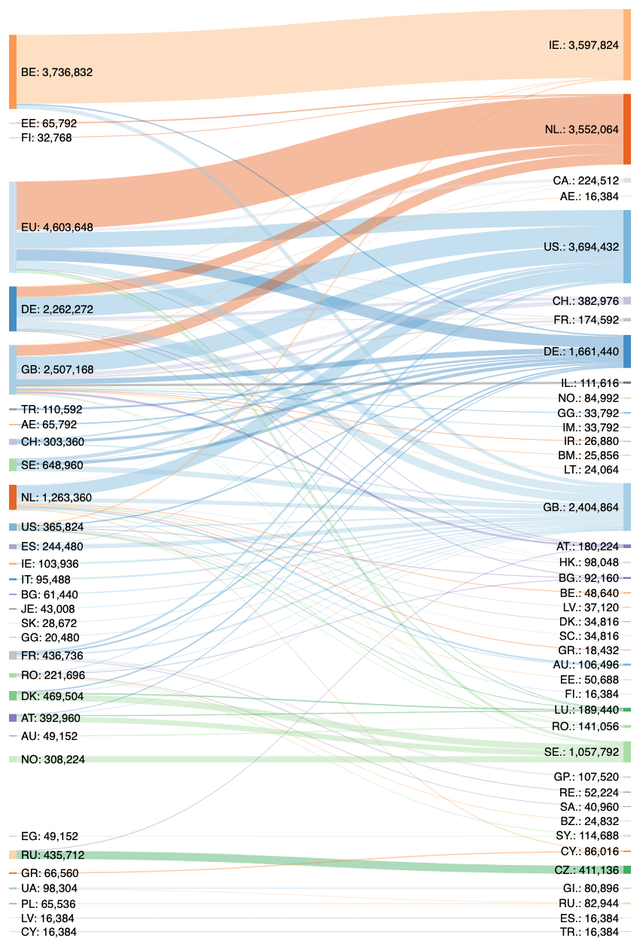
Figure 1. Number of affected IPv4 addresses, aggregated by Country Code pairs.
IPv6 addresses
For IPv6 1,475 out of the 21,937 records (6.7%) had their Country Code change. In terms of address space, these records cover the equivalent of 13,805 /32 allocations and correspond to 9.3% of the total delegated IPv6 addresses. This percentage is higher than the percentage of records which changed, because of the /20 allocation to Telia; it used to be listed with Country Code “EU”, but now has Country Code “SE” in the Delegated Statistics. Table 2 shows the top 15 net changes per Country Code, in address space and in number of blocks that have changed.
| Country Code | IPv6 Addresses (units of /32) | IPv6 blocks |
| EU | -4507 | -81 |
| SE | 4065 | -8 |
| US | 1636 | 257 |
| NL | -1441 | -192 |
| DE | -968 | -138 |
| IN | 442 | 57 |
| MD | 367 | 45 |
| SC | 339 | 45 |
| FR | -334 | -40 |
| LT | 256 | 31 |
| ES | -251 | -35 |
| CZ | 226 | 29 |
| HK | 215 | 30 |
| PL | -186 | -25 |
| LV | 176 | 23 |
Table 2. Top 15 net changes for IPv6 addresses aggregated by Country Code
Figure 2 shows the larger flows of IPv6 addresses (in units of a /32) between old and new, legal address, country codes. As with IPv4, EU, US, GB, DE and NL are the country codes most involved in these changes.
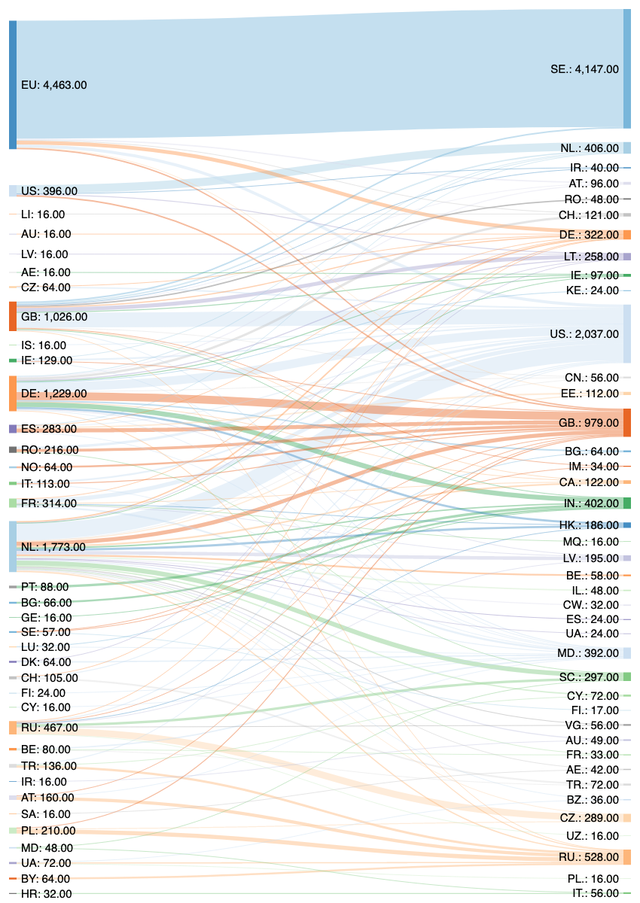
Figure 2. Number of affected IPv6 addresses in units of a /32, aggregated by Country Code pairs.
AS Numbers
Of the 36,481 AS Numbers in the Delegated Statistics, 1,495 (4%) changed Country Code. Table 3 shows the top 15 net changes.
| Country Code | AS Numbers |
| EU | -230 |
| US | 217 |
| DE | -100 |
| FR | 98 |
| NL | -97 |
| RU | -27 |
| ES | -23 |
| CY | 18 |
| IE | 18 |
| UA | -18 |
| HK | 17 |
| CH | 16 |
| SC | 16 |
| CZ | 15 |
| VG | 14 |
Table 3. Top 15 net changes for AS numbers aggregated by Country Code
Similar to figure 1 and 2 above, figure 3 shows the changes from one country into another, when the total number that changed is at least three. We observe a significant number of permutations. As for IPv4 and IPv6, EU, NL, GB, US and DE are the country codes with the most changes. In addition, FR also pops up as a replacement for EU in 98 records.
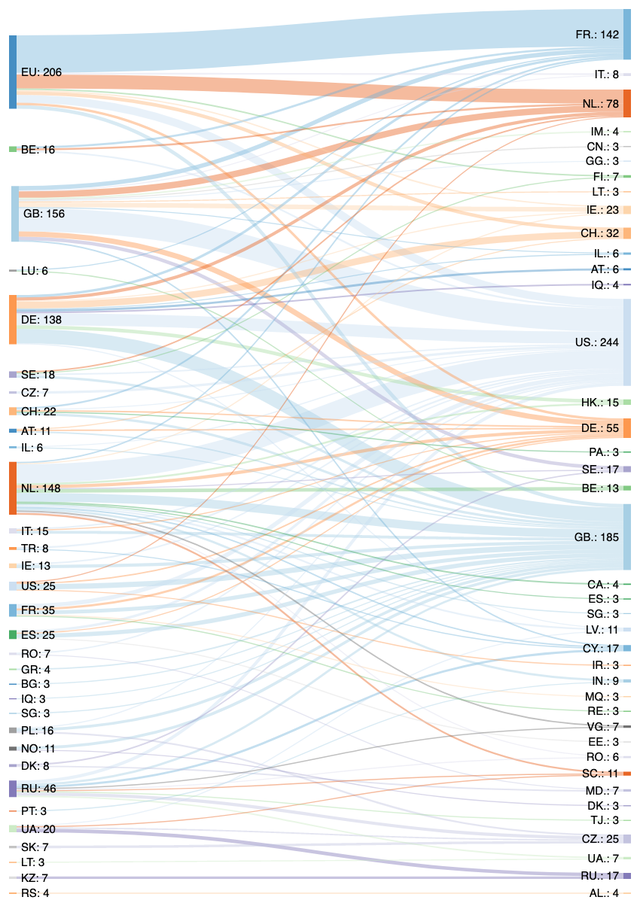
Figure 3. Number of affected AS numbers, aggregated by Country Code pairs.

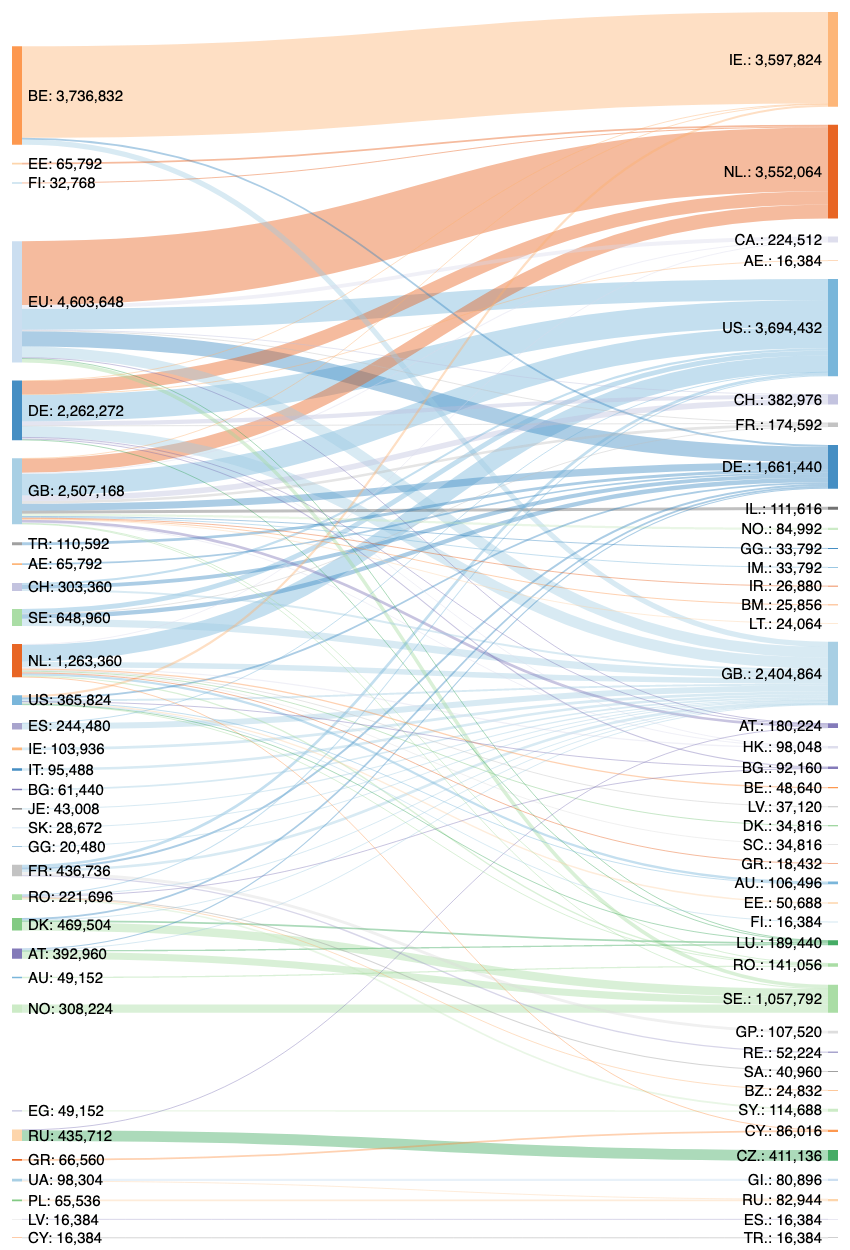

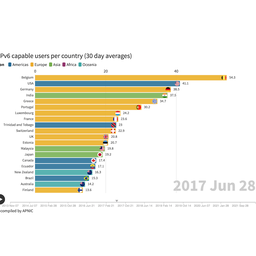
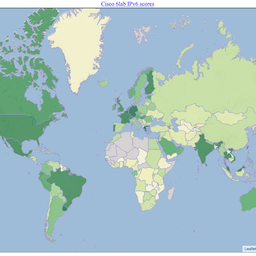
Comments 0
The comments section is closed for articles published more than a year ago. If you'd like to inform us of any issues, please contact us.